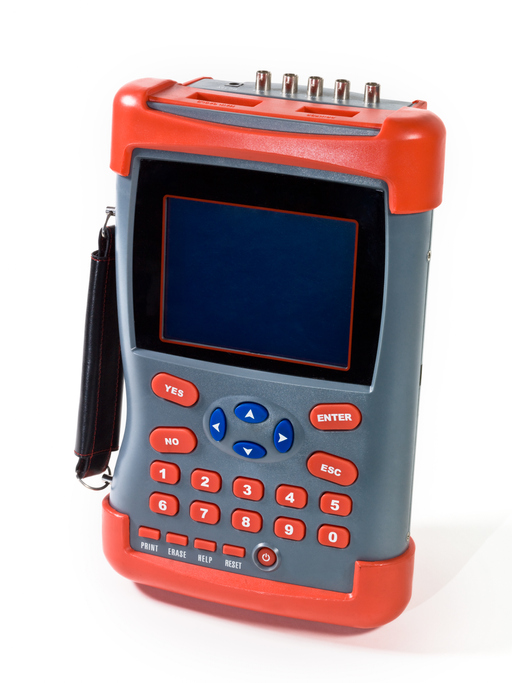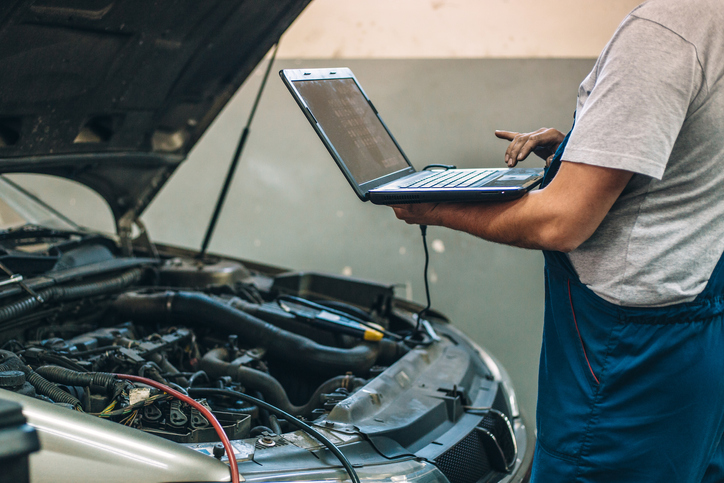

We may earn revenue from the products available on this page and participate in affiliate programs. Learn more ›
You hear a new, disturbing noise coming from your engine, open the hood, look around, and find nothing. Now what? Before you reach for a conveniently-placed torque wrench to try the ol’ “love tap,” hook up a diagnostic tool to get a little bit more intel on what’s going on.
Using an onboard diagnostic (OBD-II) scan tool will give you an extra way to find and fix problems while feeling like a professional mechanic at the same time.
When to Use a Diagnostic Tool
Don’t make the mistake of thinking a diagnostic tool is a magical solution to fixing all of your vehicular troubles. It’s not going to fix a flat or replace a windshield. If it does, that means the built-in AI has gotten a little too intelligent. In fact, the most basic diagnostic tools will only spew nonsense code at you when the Check Engine light is on. So, if you want to get the most out of the tool, you need to know when to use it.
- When the Check Engine light is on: Remember the light that is seemingly always on, even when the engine is not dropping out? That simple little light represents a number of different problems that can occur somewhere in your engine, transmission, or exhaust systems. If you want to make sense of this light instead of just ignoring it, the diagnostic tool will get the job done.
- Record vehicle performance/statistics: Some higher-end car diagnostic tools can do more than just read engine codes. More advanced tools can take live data measurements of the car’s systems to help you fine-tune the setup.
Things You’ll Need
Diagnosing problematic issues your vehicle can detect is pretty easy on paper. Ignoring the high level of mechanic skill you may need, specialized tools for working on the vehicle, and the mind-numbing trial-and-error process that comes with fixing a car, all you really need is the diagnostic tool and a vehicle.

- OBD-II Diagnostic Tool: This will allow you to read the onboard diagnostic codes your car generates when it detects a problem. Some scanners are also listed as “OBD2 scanners.”
- Post-1996 Car: Any vehicle made after 1996 will have the required OBD-II port and diagnostic system to work with the diagnostic tool. If your car is older than 1996, you may have to diagnose the issue the old-fashioned way—crack open the hood or take it to a professional.
Preparation
Using a diagnostic tool is literally as simple as plugging the device in and turning everything on. The trick is finding the right port and figuring out how to work the device.
- Locate your car’s OBD-II port. Typically, it is somewhere near the steering wheel, underneath the dashboard. A few cars have the port on the passenger side or somewhere around the center console. Check your car’s user manual for specific details.
- Turn the car off before plugging the automotive scan tool into the OBD-II port.
Methods
Diagnostic tools tend to be pretty similar in design and function. While some offer more features like advanced statistics/reading capabilities, nearly all of them are plug-and-scan. Therefore, there’s only one process you really need to follow.
Using a Code Reader
The basic idea of using a diagnostic scan tool is to get the diagnostic trouble codes your vehicle automatically records when it detects a problem. This is the exact same process that mechanics use when you take it into a garage, just with much fancier, more capable equipment.
Plug the Diagnostic Tool into the OBD-II Port
Diagnostic tools download data from a vehicle’s onboard diagnostic (OBD-II) port. This universal access port will give you access to virtually anything the vehicle detects in terms of issues. To access the information, you need to apply a little juice to the setup.
- Plug the end connector into the vehicle’s OBD-II port. Make sure you get a good, secure fit so the tool can communicate with the vehicle’s onboard computer.
- Turn on the car. You don’t need to start the engine if your vehicle stores car codes in memory. If the engine needs to be on so the onboard computer can monitor its health in real-time, then you’ll have to start the car up all the way.
Read the Car Code(s)
The golden key of the diagnostic process is the specific codes your vehicle creates when it detects an issue. The diagnostic tool can download and read these codes so you have some reference of what isn’t working. Don’t try to read the code yourself, as it will look like complete nonsense unless you happen to speak fluent “code.”
- Turn on the diagnostic tool. Basic tools should have a simple power button somewhere on the unit.
- If you have a Bluetooth-capable diagnostic tool, turn on the unit from where it plugs into the port if it doesn’t turn on automatically.
- Access the diagnostic scanner. Some scanners will automatically start to read the car codes once powered on. Others may have a button or menu item like “Scan” to start the process.
- You will have to access a compatible app for Bluetooth-capable scanners. Some come with their own app, while others are compatible with third-party apps.
- You may need to enter the vehicle’s VIN number into the scanner if you are using it on a new vehicle for the first time.
- Record the data. After the scan has completed, typically within a few seconds, it will display any specific trouble or error codes it reads. Take note of these codes if the scanner doesn’t give you a detailed explanation of what the code means.
- Some scanners will store the codes for you, download them to a computer/website, or give you an explanation right from the screen.
- Most scanner apps for Bluetooth-capable scanners connect to a diagnostic service that will give you more information.
- Optional: Clear the codes. If you don’t want to keep the Check Engine light on, use the diagnostic tool to clear the warning light if possible.
Interpret the Data
Looking at the trouble codes and wondering what the heck they mean? That’s normal. To make sense of everything, you will need a code reader to translate the trouble codes into plain words.
- Option 1: Search online for the trouble code. A simple search with the code will give you the information you need from automotive and/or manufacturer websites.
- Option 2: Use specialized software. Some third-party computer programs can download trouble codes from the diagnostic tool and read the information straight from a desktop or laptop.
- Option 3: Read the information straight from the diagnostic tool. Higher-end diagnostic tools will give you a code description right on the screen of the device. Some tools offer more information than others, but you should get a basic idea of the issue the code represents.
Fix the Problem
Now that you have some basic diagnostic information, it’s time to get to the fixing part. This final step will completely depend on your mechanical skill level/experience.
- Option 1: Fix the problem yourself. If you have some skill and experience with automotive repair, the trouble codes/descriptions you have should offer a good starting point to find and fix the issue.
- Keep in mind, trouble-code alerts aren’t always related to the problematic part and may be a symptom of another issue instead.
- Basic diagnostic tools aren’t the best way to fix issues on your own. Mechanics have access to higher-quality diagnostic tools that monitor more systems and information.
- Option 2: Hire a professional mechanic. Whether you lack experience or the tools to fix the issue(s) yourself, it’s always a smart idea to consider a professional mechanic. Some automotive repairs are expensive, yes, but you can easily spend more money on specialty tools or fixing your mistakes.
Tips
- If you use the internet to search for trouble codes, dig a little deeper to find common fixes to the problem.
- Some diagnostic tools are meant to stay plugged into the OBD-II port and deliver periodic updates on your vehicle’s health.
- If you go to see a mechanic after you scan your vehicle, bring the codes along to give the mechanic a head start.
- Don’t reset anything like the Check Engine light until you have found the error trigger. Otherwise, it will most likely come back on later.
FAQ
A. Not one that’s compatible with OBD-II ports. Some older cars have an OBD-I port or nothing at all.
A. It largely depends on the specific diagnostic scanner. Most can detect anything that triggers the malfunction indicator light.
A. It depends on the country. For example, most European vehicles come equipped with a European On-Board Diagnostics (EOBD) system.